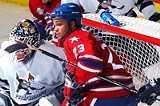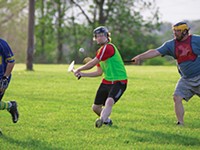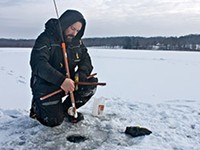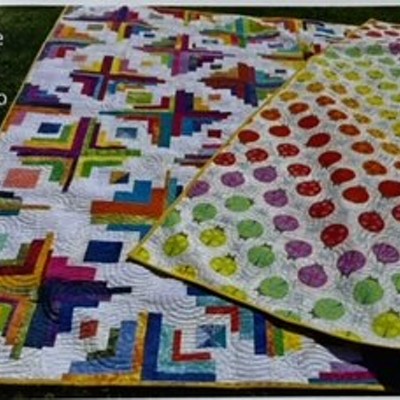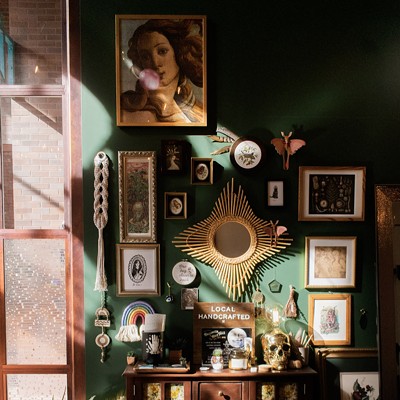[
{
"name": "500x250 Ad",
"insertPoint": "5",
"component": "15667920",
"parentWrapperClass": "",
"requiredCountToDisplay": "1"
}
]
On April 8, Binghamton Senators goon extraordinaire Brian McGrattan bragged before the B-Sens' impending game with the Rochester Americans that he would break the American Hockey League's single-season record for penalty minutes by immediately picking a fight with Amerks tough guy Sean McMorrow.
McGrattan wasn't bullshitting. About two minutes into the first period, McGrattan roped in McMorrow, who had done nothing to spur on McGrattan but nonetheless found himself sparring with a man who was determined to etch his name in the record books.
Because the game was being played in Binghamton, McMorrow became the target of thunderous and merciless taunting from the B-Sens fans in Broome County Veterans Memorial Arena. There was no doubt: the partisan crowd hated McMorrow.
But was he hated solely because, as an enforcer, McMorrow often draws fans' ire when he throws his body around and cleans opposing players' clocks?
Or did the Binghamton crowd also hate McMorrow because he's black?
Thanks to geographic proximity and both teams' sterling records, a tense rivalry has developed. And shortly before the April 8 game, McMorrow used Binghamton as an example when he discussed issues of race and hockey with City Newspaper.
"During my first year [in the AHL, 2002-03], we might have gone to Binghamton, and their fans might think of me as 'that black guy,'" he said. "But by my third year [this season], I was exactly the same as everybody else to them. To them I'm not 'that black guy.' I'm McMorrow."
In fact, McMorrow said he has experienced very little racism during his three years with the Amerks; he can point to only two specific incidents in which his race became an issue. By now, he said, hockey has outgrown its reputation as a white sport reluctant to become a multicultural pastime for fans and players.
It was in youth and high-school hockey that he heard the taunts and slurs and withstood the extra-hard checks and stick jabs. But by now, he said, hockey --- and the people who play and watch it --- have grown up.
"It's a maturity level, a respect level," he said.
It's a rap hockey has found very, very hard to shake: too white, too elitist, too expensive, too unfriendly for any minority kid who might think about lacing up a pair of skates. Indeed, the National Hockey League was an all-white enterprise until Willie O'Ree, a speedy scrapper from New Brunswick, broke in with the Boston Bruins in 1958.
In hindsight, such racial monochromism isn't too surprising given that for decades the NHL's ranks were almost exclusively filled by players from Canada, where the percentage of black citizens was miniscule.
Before O'Ree became the Jackie Robinson of hockey, black players dotted minor-league, semi-pro, and club teams across Canada, with small-market stars like Fred "Bud" Kelly and Herb Carnegie coming tantalizingly close to the big leagues. And in 1900, the Colored Hockey League of the Maritimes emerged as the Canadian hockey equivalent of the United States' famous Negro Baseball Leagues.
But it wasn't until Mike Marson in the 1970s and adept goal-scorer Tony McKegney in the 1980s that an African American earned a steady, long-term NHL gig. Then came Hall of Famer Grant Fuhr, the goalie on the title-winning Edmonton Oilers squads that also included legends Wayne Gretzky, Jari Kurri, and Mark Messier. It was perhaps Fuhr's fame and success that firmly established that, given the right circumstances and encouragement, hockey didn't have to be incongruous with the black experience.
(For a detailed historical overview of blacks in hockey, read Breaking the Ice: The Black Experience in Professional Hockey, by long-time hockey writer Cecil Harris.)
Over the last few years the NHL has had roughly a couple dozen black skaters out of more than 600 overall. While that percentage might not match the dominance blacks have found in basketball and football, it's light years ahead of the environment in which O'Ree found himself 50 years ago.
Perhaps the biggest evidence that black players might be close to breaking through in the NHL is the Calgary Flames' Jarome Iginla, a right winger from Edmonton who, at the end of the 2003-04 season, was arguably the league's most popular player.
After he led the Flames on a Cinderella run to the 2004 Stanley Cup finals (which Calgary lost in heartbreaking fashion to Tampa Bay, four games to three), NHL officials could barely contain their excitement: here was a smart, charismatic, hugely talented black kid of Nigerian descent who had enraptured the hockey world. Here was the face of hockey's future, the poster boy for a league and a sport that desperately wanted to appeal to a younger, hipper audience.
As it turns out, hockey now needs all the help it can get. Even with players like Iginla leading the way, the sport might never overcome the debilitating labor lockout that has erased the 2004-05 NHL season. If few people cared about hockey before the lockout, even less give a crap now that the NHL's players and owners have shot themselves in their collective foot with what has become a PR nightmare.
Which means hockey bigwigs can no longer simply experiment with drawing black, Latino, and other traditionally disadvantaged youth to the game. Hockey needs to tap the massive potential within the millions of American and Canadian kids who traditionally wouldn't give hockey a second thought. It's those kids who just might save the sport.
As a result, hockey programs aimed at disadvantaged youth are springing up across the country, including Rochester, where both the city and the Skating Institute of Rochester give kids a chance to pick up a stick.
The city's Bureau of Parks and Recreation offers a program that gathers about two dozen city kids ages 6-10 at Genesee Valley Park every Saturday from October until April. The group boasts wide diversity, thanks to the city's large minority population.
And that's the goal, says John Kerr, the bureau's director of athletics and aquatics: "We want to bring inner-city kids who aren't normally exposed to hockey." While basketball rims fill many city neighborhoods, he says, "there's not an ice rink on every corner.
The program, Kerr says, is coed, and more importantly, it's completely free for participants. The weekly sessions are fairly intensive, with kids learning the basics of the game and playing intrasquad scrimmages under the watch of volunteer adults who have hockey experience, first-aid training, and security clearance. The program has been so successful, Kerr says, that salaried coaches and games against outside programs are slated for next year.
The Skating Institute's program, held at Shumway Arena, is similar, with participants ranging in age from 2 to 14, says the program's founder, Laurie Kennedy. Kids with no experience on the ice are given skating lessons before they tackle the rudiments of the game.
Like the city's program, the Skating Institute's group of roughly 40 kids is diverse on purpose. "We have kids of every race, age, and size covered," Kennedy says. While many of the youth don't take up hockey permanently, she says, "at least we give them a chance to try it."
The volunteer-driven program also takes a holistic approach to the sport, stressing physical fitness and academic development, with students keeping written journals and writing regular reports along the way. The program is also supported by NHL Diversity, the pro league's multicultural outreach effort.
While the sport of hockey benefits from such programs, both Kennedy and Kerr hope the kids involved also come away with key life lessons: teamwork, interpersonal communication, physical fitness, sportsmanship, self-improvement, discipline. Says Kerr: "We want to introduce them to a sport, and maybe a lifetime activity."
In that respect, hockey is probably no different than any other American sport; even with all the excesses and abuses in professional and big-time college sports, there are countless men and women who were positively shaped by their experiences in Little League, Pop Warner --- or youth hockey.
But can that universality be sold to minority and underprivileged kids who are raised to view hockey as either too white, too costly, or both? Can enough financial resources and personal dedication be mustered to tell such kids that hockey just might present a world of possibilities?
The Amerks' McMorrow thinks it can, as long as kids are encouraged from an early age, like he was, to embrace the sport and invest the intense amount of physical and emotional dedication needed to succeed. He received such support as a kid in Toronto, he says, especially from his mother. From early on, McMorrow knew he wanted to play in the NHL, and once he set that goal, he has never deviated from it.
"It's pretty much a role-model type thing," he said. "It a kid watches Jarome Iginla, they might say, 'I want to be like Jarome Iginla.' If it's a black kid, he might say, 'I want to play hockey.' When you see success, you want to mimic it."
Such assertions receive support from trailblazer O'Ree himself, who now serves as director of youth development for the NHL Diversity program. In a 2001 interview for nhl.com, O'Ree noted that some of the black players he inspired have now become inspirations themselves.
"They know they are role models for younger boys and girls playing now," he said. "These kids are now setting goals for themselves because it is possible to break that barrier. You can do what you want if you believe you can, and if you think you can, you will."
If that happens to enough kids, McMorrow said, all of hockey might reach the point he said he's found, one where his race just doesn't matter, even to the loudest, drunkest, obscenity-screaming opposing fan.
"A lot of people don't like change," he said. "But once they get used to it, they realize that it's just another day at the office for me. At this level, it really doesn't matter what you look like. You're here to make money, because it's your profession."
The Rochester Americans enter round one of the AHL playoffs today, April 20, in a seven-game series against Hamilton at the Blue Cross Arena, One War Memorial Square, at 7:05 p.m. The rest of the Rochester games in the series take place Friday, April 22, at 7:35 p.m.; Friday, April 29, at 7:35 p.m. (if necessary); and Monday, May 2, at 7:05 p.m. (if necessary). www.amerks.com
Speaking of...
-
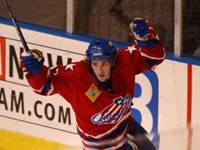
Keep it on ice
Sep 21, 2005 - More »
Latest in Sports
More by Ryan Whirty
-
RECREATION: Adult kickball leagues in Rochester
Jul 29, 2009 -
RECREATION: Changing Lanes
Oct 29, 2008 -
Lady Tribunes eye fourth consecutive national title
Jan 17, 2007 - More »
